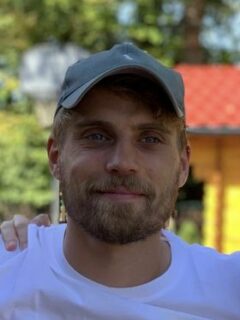Tom Schneider
Tom Schneider
Master student
Development of a Hydrogel-Peptide System to Mimic the Crypt-Villus Architecture of the Intestinal Epithelium
Supervisors: Dr. Christopher Synatschke (MPI for Polymer Research, Mainz), Prof. Dr. Aldo R. Boccaccini
In vivo, cells are enveloped by nature’s prototypical hydrogel – the extracellular matrix (ECM). Today, it is widely acknowledged that cell fate is significantly influenced not only by biochemical cues but also by the spatial, topographical, and mechanical aspects of the cellular environment. Therefore, expanding cell cultures into ECM-mimicking 3D environments is crucial to enhance their physiological relevance, thereby augmenting the predictive power for both basic and translational research [1,2]. This Master’s Thesis aims to develop a hydrogel-peptide system for 3D cell culture. The resulting hydrogels should be structured in 3D using micromolds to match the dimensions of the villus-crypt architecture located in the intestinal epithelium [3]. Due to its physiological peculiarity as stem cell niche, the crypt-villus architecture is of particular interest for the creation of a standardized in-vitro model for high throughput applications (e.g., efficacy and toxicity screening). The experimental work is carried out completely at the Max-Planck-Institute for Polymer Research, Mainz.
[1] Caliari, S. R. & Burdick, J. A. A practical guide to hydrogels for cell culture. Nat. Methods 13, 405–414 (2016).
[2] Xu, K. L., Mauck, R. L. & Burdick, J. A. Modeling development using hydrogels. Development 150, dev201527 (2023).
[3] Gjorevski, N. et al. Tissue geometry drives deterministic organoid patterning. Science 375, eaaw9021 (2022).

